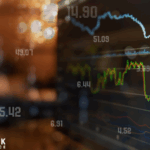The dominance of contactless payments persists, evident in Mastercard (NYSE:MA)’s recent quarterly financial disclosures. Despite economic uncertainties casting shadows, the company reports robust consumer confidence, affirming credit and debit spending stability. Examined results indicate thriving financial health reflected in gross dollar volumes and cross-border transactions increase. Mastercard’s value-added services continue to be pivotal, offering a potential avenue of growth amid consistent monetary performance and shifting payment preferences. This narrative conveys the relevance of non-cash payments, underlining changing consumer habits as digital transactions become more mainstream.
A review of Mastercard’s previous reports shows ongoing growth in digital payments, mirroring current patterns. An earlier emphasis on expanding contactless payment methods matches today’s figures, underlining a gradual and consistent consumer transition from traditional payment forms. Past reports also highlighted the importance of AI techniques for fraud prevention, a narrative echoed as AI demonstrates efficiency in detecting financial discrepancies today. Such consistencies illustrate Mastercard’s sustainable trajectory facilitated by technological integration, highlighting widespread digital acceptance.
How Solid Is Consumer Spending?
Mastercard CEO Michael Miebach shared perspectives on consumer confidence, remarking on heightened geopolitical tensions but observing firm fundamentals in consumer purchasing power. He detailed a sizeable opportunity in sustainable expansion across various payment flows. The push for digital adoption remains evident, with the majority of in-person transactions being contactless and a large segment tokenized. Meanwhile, recurring revenue from value-added services underlines the resilience of Mastercard’s business model.
What Drives Mastercard’s Predominant Growth?
Cross-border transaction volume has bolstered Mastercard’s performance, augmented by stable growth in both travel and non-travel sectors. Chief Financial Officer Sachin Mehra highlighted nominal downturns affected by global instability yet affirmed that consumer fundamentals remain largely intact. Growth projections anticipate high-end revenue increase, driven by healthy consumer metrics and proactive diversification strategies within their digital platform.
As different executives navigated through earnings projections, the company faced queries regarding future digital currencies. They emphasized the necessity for regulatory advances, framing stablecoins within Mastercard’s established sphere of payment integration. Such discussions mirrored the proactive stance towards integrating forthcoming financial technologies under a regulatory umbrella, a testament to their strategic anticipation of sector advancements.
CEO Miebach encapsulated the consumer climate by stressing continued engagement and experiential spending. Trends show digital economy tools at the forefront, deciding the fineness between discretionary and nondiscretionary expenditure. Stability in U.S. spending habits supports this narrative, suggesting sustained patterns in consumer behavior.
The transition from cash to digital forms a secular trend embracing economic ebbs and flows. Mastercard’s momentum in digital evolution seemingly aligns with long-term consumer dynamics, signaling persistent demand for seamless payment mechanisms regardless of external economic shifts.
Analyzing Mastercard’s consistent focus on contactless and digital payments reveals an ability to adapt strategies effectively. Acknowledging both current successes and foundational approaches to payment transformation illustrates a business poised for continued relevance. Engagement in digital-centric financial ecosystems promises forward-running trends in consumer payments, supported by forecasting confidence in sustainable business expansion.










